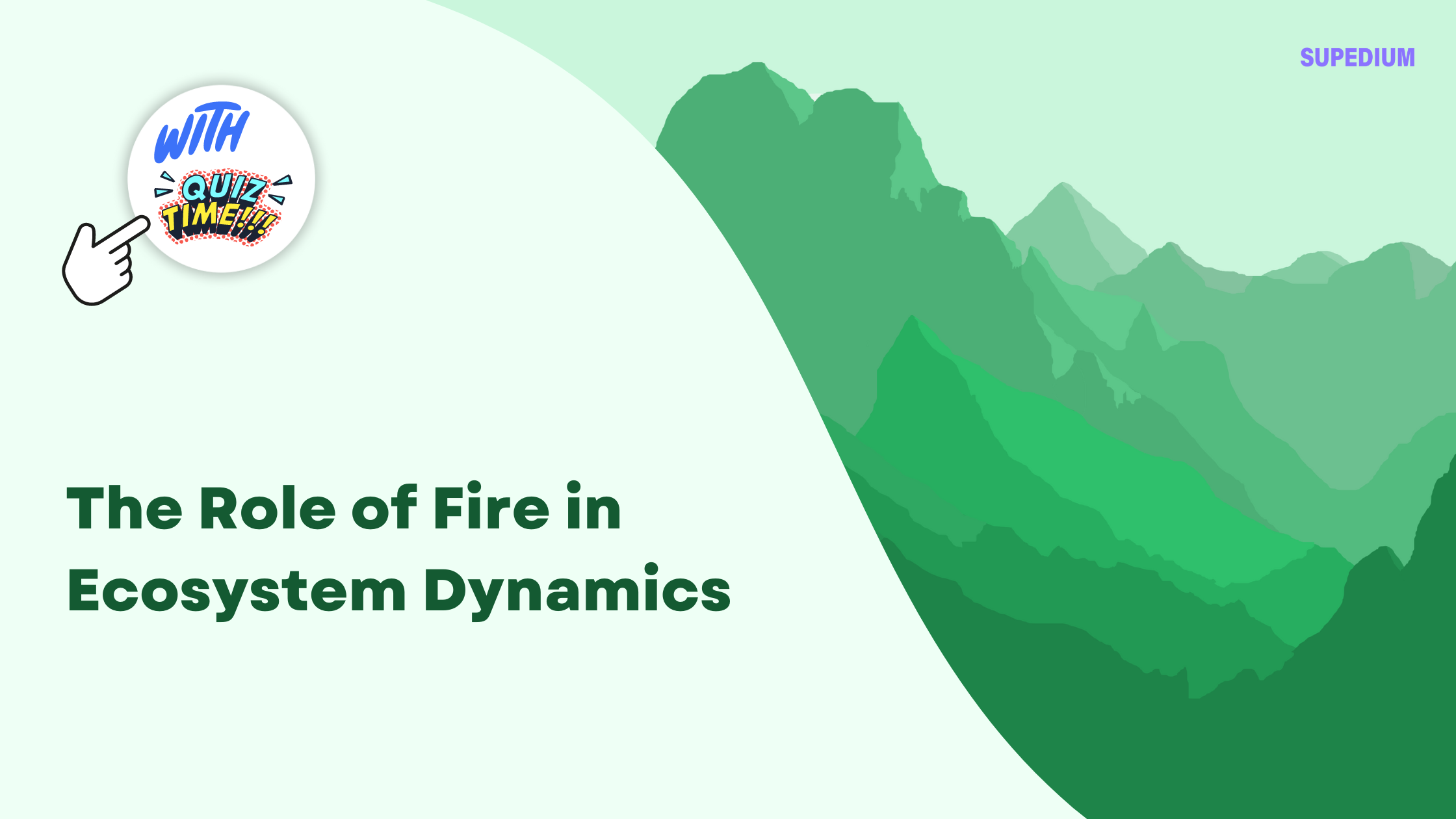Table of Contents
![]()
I. Introduction
Ecosystem dynamics refers to the complex interactions between living organisms and their environment, which drive ecological balance and change. Fire, a natural and powerful ecological force, plays a crucial role in shaping these dynamics. Its influence spans across nutrient cycling, vegetation patterns, wildlife habitats, and even cultural practices. Understanding the multifaceted role of fire in ecosystems is essential for managing and conserving biodiversity, especially in the context of modern challenges such as climate change and human impact.
II. The Science of Fire
A. How Fire Occurs
Fire is a chemical reaction that requires three elements to ignite: heat, fuel, and oxygen, collectively known as the fire triangle. Heat can come from lightning, volcanic eruptions, or human activities, while fuel includes vegetation, dead organic matter, or any combustible material. Oxygen is supplied from the atmosphere. There are different types of fires based on their intensity and spread:
- Surface Fires: These burn low-lying vegetation like grasses and shrubs and are generally less intense.
- Crown Fires: These fires spread through the tree canopies and are more intense, often driven by strong winds and dry conditions.
- Ground Fires: These occur beneath the surface in peat or other organic-rich soils and can smolder for long periods.
B. Fire Behavior and Characteristics
The behavior of a fire is influenced by several factors, including its intensity (the amount of heat released), duration (how long it burns), and spread patterns (how it moves across the landscape). Weather conditions such as temperature, humidity, and wind speed can significantly affect fire behavior. Topographical features like slopes and valleys can also influence fire spread, with fires often moving more rapidly uphill due to increased pre-heating of fuel.
III. Fire as an Ecological Process
A. Fire’s Role in Nutrient Cycling
Fire plays a crucial role in nutrient cycling within ecosystems. When vegetation burns, the resulting ash enriches the soil with essential nutrients like potassium, phosphorus, and calcium. This process enhances soil fertility and pH, which can stimulate new plant growth. In some ecosystems, fire is necessary for the release of nutrients that are otherwise locked in plant material.
B. Fire and Vegetation
Many plant species have adapted to fire-prone environments. Some, like certain species of pine, have fire-resistant seeds that require the heat from fire to germinate. Others have thick bark or deep root systems that allow them to survive or quickly regenerate after a fire. Fire also initiates successional stages in ecosystems, where the landscape transitions from a burned state to a mature ecosystem. Initially, pioneer species, which are often fire-adapted, colonize the area, followed by a gradual succession of other plant species.
C. Fire and Wildlife
Fire can have both positive and negative impacts on wildlife. On one hand, fire can create diverse habitats by opening up dense vegetation and creating a mosaic of different successional stages. Some species depend on fire to maintain their habitat or find food. For instance, certain birds and mammals thrive in areas with a mix of burned and unburned vegetation. On the other hand, fire can destroy habitats and lead to short-term losses in wildlife populations. Species that are less adapted to fire may struggle to survive.
IV. Historical and Contemporary Perspectives on Fire
A. Indigenous Knowledge and Fire Management
Indigenous cultures around the world have long recognized the role of fire in managing ecosystems. Traditional burning practices, such as controlled burns, were used to maintain landscapes, promote the growth of certain plants, and manage game populations. Fire was integral to cultural practices and was used to enhance the productivity of the land. Indigenous knowledge of fire management has been increasingly recognized for its value in modern conservation practices.
B. Modern Fire Management Practices
Today, fire management practices aim to balance the ecological benefits of fire with the risks to human life and property. Controlled or prescribed burns are conducted to reduce fuel loads, prevent larger wildfires, and restore fire-adapted ecosystems. Fire suppression strategies, including the use of firebreaks and aerial firefighting, are employed to protect communities and infrastructure. Technological advancements, such as satellite monitoring and fire modeling, have improved the ability to predict and manage fires.
V. Case Studies
A. Fire in Forest Ecosystems
In temperate forests, such as those in North America, wildfires play a critical role in maintaining ecosystem health. For example, the frequent fires in the western United States help to clear out dead wood and promote the regeneration of fire-adapted species like lodgepole pine. In Australia, bushfires are an essential part of the ecosystem, although their intensity has increased in recent decades due to climate change.
B. Fire in Grassland Ecosystems
Grasslands, including the North American prairies and African savannas, rely on periodic fires to maintain their structure and diversity. In prairies, fire prevents the encroachment of woody species and promotes the growth of grasses and wildflowers. Similarly, in savannas, fire helps to sustain the diversity of plant and animal species by creating a patchwork of burned and unburned areas.
C. Fire in Desert Ecosystems
Desert ecosystems, though less frequently associated with fire, also experience fire events that can influence their dynamics. In arid environments, fire can impact plant communities and soil properties. Certain desert plants have adaptations to survive or recover from fire, such as deep root systems or the ability to resprout from underground parts.
VI. Implications of Fire in a Changing Climate
A. Increased Frequency and Intensity of Fires
Climate change is altering fire regimes globally, leading to increased frequency and intensity of fires. Warmer temperatures, prolonged droughts, and changing precipitation patterns contribute to more frequent and severe wildfires. These changes can disrupt ecosystems and increase the risk of catastrophic fires, challenging traditional fire management practices.
B. Ecosystem Resilience and Adaptation
To cope with the changing fire regimes, ecosystems and management strategies need to adapt. Enhancing ecosystem resilience involves promoting fire-adapted species, managing fuel loads, and restoring fire-prone landscapes. Addressing invasive species that thrive in disturbed environments is also crucial for maintaining ecosystem health.
VII. Conclusion
Fire is a dynamic and integral part of ecosystem processes, influencing nutrient cycling, vegetation patterns, and wildlife habitats. While fire can have both beneficial and detrimental effects, its role in maintaining ecological balance is undeniable. As climate change continues to impact fire regimes, understanding and adapting to these changes is essential for effective ecosystem management and conservation.






Be the first to comment